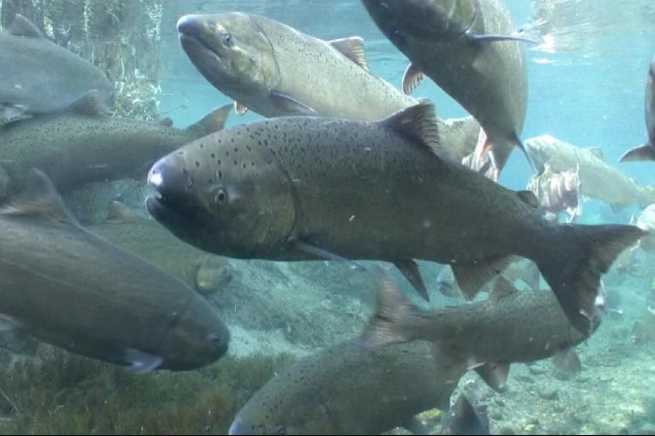
A report produced for eight private, nonprofit hatchery associations concludes that Alaska’s salmon hatcheries generate $600 million in economic output, with impacts throughout the state’s economy.
According to the study released in October by the McDowell Group in Juneau, Alaska, commercial fishermen harvested an annual average of 222 million pounds of hatchery-produced salmon worth $120 million in ex-vessel value during the 2012-2017 study period.
Chum and pink salmon were responsible for 39 and 38 percent of ex-vessel value respectively, followed by sockeye 16 percent, coho four percent and Chinook two percent.
Some 57 percent of the hatchery salmon ex-vessel value went to seiners, while gillnetters pulled in 38 percent and trollers took five percent.
From the regional perspective, Prince William Sound harvests generated $69 million in ex-vessel value annually. Southeast harvests brought in $44 million for fishermen followed by Kodiak at $7 million and Cook Inlet with $500,000.
According to the research, hatchery derived salmon represent 22 percent of the total salmon ex-vessel value for the 2012-2017 period. The percentage ranged from a high of 28 percent in 2013 to a low of 15 percent in 2016. The hatchery contribution was highest in Prince William Sound at 65 percent, followed by Southeast at 31 percent, Kodiak at 16 percent and Cook Inlet at two percent.
[content id=”79272″]
Some 52 million hatchery-produced salmon are harvested on average annually in Alaska’s common property commercial fisheries. They are caught by nearly all commercial harvesters fishing in Southeast Alaska, Prince William Sound, Kodiak and Cook Inlet. Over the study period an annual average of 3,840 permit holders and an estimated 4,860 crew benefitted from hatchery product, the report said. Prince William Sound seiners generally source most of their harvest from hatchery fish, while Kodiak set gillnet fishermen have much less of a direct connection to hatchery fish.
For the seafood processing sector, the first wholesale value of products produced with hatchery-produced salmon was estimated to average $361 million during the study period.
Hatchery fish also contribute substantially to sport fishing, personal use and subsistence harvests, with an estimated 10,000 hatchery-reared Chinook, 5,000 chum, 100,000 coho, 19,000 pink and 138,000 sockeyes caught annually in sport, personal use and subsistence fisheries in Alaska.
Fishermen’s News Online grants permission to the Alaska Native News to post selected articles. Read More at: Fishermen’s News Online.









